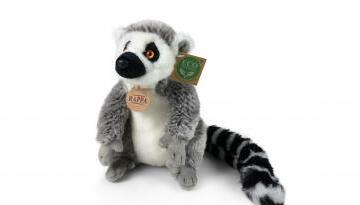05.07.2021 05:45 Date: July 5, 2021 Today’s Doodle celebrates Algeria Independence Day, which was designated a national holiday two days after sovereignty was secured in 1962. Algeria Independence Day commemorates the unification and victory of the Algerian people following over 130 years of resistance of French colonialism . The nation’s green and white striped flag, depicted in the Doodle artwork, flies as a symbol of freedom, from the capital of Algiers on the Mediterranean coast to cities across the vast expanses of the Saharan desert. Algerians from all walks of life attend the official annual parades, concerts, and cultural events. These celebrations highlight the strong undercurrent of cultural perseverance that is believed by many to be key in securing the nation’s independence. Happy Independence Day, Algeria! Location: Tags: , , , ,
05.07.2021 05:45 Date: July 5, 2021 Today’s Doodle celebrates Palestinian-born artist Maliheh Afnan, who is widely regarded among the most significant Middle Eastern artists of the 20th century. In what she called “written paintings,” her artifact-style mixed media explores themes such as exile and displacement while acknowledging Middle Eastern conflicts and the influence of her cultural heritage. The Institute of Contemporary Arts in Milan featured Afnan’s 1979 piece “Wartorn” in a virtual group exhibition “The Symmetry of Fragility,” which ended on this day in 2020. Maliheh Afnan was born in Haifa, Palestine on March 24, 1935, before her family sought refuge from war in Beirut, Lebanon in 1949. Afnan was fascinated with written language as a child and filled pages with imaginary text and numbers, developing a striking style of abstract calligraphy. She moved to the U.S. in 1956 to pursue her dream of becoming an artist. Afnan graduated from an M.F.A. program in 1962, during which her infusion of Arabic and Persian script into assignments motivated a teacher to introduce her to American calligraphic artist Mark Tobey. Afnan cold-called Tobey, who became her mentor and facilitated her first European solo exhibition in 1971–a turning point in what grew into an over 50-year career. She returned to Beirut in 1974, but the civil war forced her to move to Paris before finally settling in London in 1997. Today, Afnan’s collections can be found in galleries across the Middle East, in numerous European museums, and in New York’s Metropolitan Museum of Art. Here’s to you, Maliheh Afnan! Thank you for writing a new script for future generations of artists. Early drafts of the Doodle below Location: , , , , , , , , , , , , , Tags: , , , , ,
05.07.2021 05:45 Date: July 4, 2021 Congress is now in session—but a different one than you might think! Did you know? A “congress” refers to a group of bald eagles, the national bird of the United States. These parading pals have swooped into today’s Doodle to celebrate the Fourth of July, also known as Independence Day. On this day in 1776, the adoption of the Declaration of Independence proclaimed the sovereignty of the United States. Although the population of bald eagles in the contiguous United States once teetered on the brink of extinction, they now thrive with an estimated population above 316,000 thanks to the passage of the National Emblem Act in 1940 and recent conservationist efforts. Talk about a soaring comeback! Happy 4th of July, USA! Let sparks fly and to celebrate the 4th of July! Early drafts of the Doodle below Location: , Tags: , , , , ,
05.07.2021 05:45 Date: July 3, 2021 Today’s Doodle, illustrated by Baltimore-based guest artist , celebrates the 122nd birthday of Jewish, German-born British neurologist Professor Sir Ludwig “Poppa” Guttmann, founder of the Paralympic movement. Guttmann was born in Tost, Germany on this day in 1899 and went on to receive his M.D. in 1924. He subsequently began research on spinal cord injuries and performed several neurosurgical procedures, rising to prominence as one of Germany’s top neurosurgeons by his early thirties. However, with the rise of the Nazi party and the passing of the Nuremberg Laws in 1933, Guttmann was prevented from practising medicine professionally. Following Kristallnacht in 1938 and the increasing persecution of Jews in Germany, Guttmann was forced to leave Germany with his family and was able to escape to England in 1939. In England, Guttmann advanced his research in paraplegia. In 1944, he put his innovative approach into practice as the director of the National Spinal Injuries Center at Stoke Mandeville Hospital. In 1948, he organized a 16-person archery contest, one of the first official competitive sporting events for wheelchair users. Later called the “Stoke Mandeville Games” or the “Olympics for the Disabled,” the competition demonstrated the power of elite sport to break down barriers for disability and garnered the attention of global medical and sporting communities. In 1960, Guttmann facilitated the International Stoke Mandeville Games, following the 1960 Summer Olympics, the first of many Paralympic Games. His passion for patient care never faltered—he also founded the International Medical Society of Paraplegia and the British Sports Association for the Disabled in 1961. He received numerous accolades for his contributions, the highest among which was being knighted by Her Majesty the Queen in 1966. Today, Paralympic athletes are rightfully recognized for their skills and achievements. The Paralympic Games continue to be a driving force for promoting the rights and independence of people with disabilities, with a lasting impact on equal treatment and opportunity. Happy birthday, Prof. Sir Ludwig Guttmann! Founder of the Paralympic Movement, Professor Sir Ludwig Guttmann was the medical pioneer who created the first Paralympic Games. Learn more about his story and legacy . Special thanks to the National Paralympic Heritage Trust and Professor Sir Ludwig Guttmann’s Family for their partnership on this project. Below his family and the Trust share their thoughts on the Doodle and Ludwig Guttmann’s legacy. From the very first sporting event at the National Spinal Injuries Centre in 1948, my father said he wanted the Olympics for the disabled. His dream and pioneering vision certainly came true. - Eva Loeffler OBE, daughter of Professor Sir Ludwig Guttmann We are delighted to be celebrating the incredible Paralympic legacy of Professor Sir Ludwig Guttmann on the anniversary of his birth 122 years ago, with just weeks to go before Tokyo 2020. He was there in 1964 for the second Paralympic Games and his spirit lives on. - Vicky Hope-Walker, CEO of the NPHT Pictured: Professor Sir Ludwig Guttmann at Stoke Mandeville Games 1953 Photo credit: Courtesy of WheelPower British Wheelchair Sport Pictured: Professor Sir Ludwig Guttmann and Team boarding a flight to the Rome 1960 Paralympic Games Photo credit: Courtesy of International Wheelchair and Amputee Sports Federation Guest Artist Q&A with Ashanti Fortson Today’s Doodle was illustrated by Baltimore-based guest artist . Below, they share their thoughts behind the making of this Doodle: Q. Why was this topic meaningful to you personally? A. Living with disability has many facets to it, but one of the most acute struggles of disability—no matter the form that disability takes— is the constant navigation, negotiation, and denial of equitable access. It's baked into many parts of society, including athletics, and there aren't many non-disabled people who are willing to dedicate so much of themselves to helping create accessible and equitable spaces for disabled people. We haven't often had non-disabled allies who have done so much to help amplify our voices, so Professor Guttmann's story and his work in athletics resonate deeply with me. Q. Did you draw inspiration from anything in particular for this Doodle? A. Despite me being a lifelong bookish artist with no athletic inclinations, both of my parents are professional athletes and coaches. I grew up around a lot of athletes, both professional and not, and I've been lucky to gain a deep, firsthand appreciation for the beauty of sports. In depicting the forms and movements of Paralympic athletes for this Doodle, I really wanted to channel how awesome the capabilities of human bodies are. I feel quite lucky that I was able to feature so many athletic vignettes to spell out G-O-O-G-L-E! Q. What was your creative process for this Doodle artwork? A. The bulk of my work for this Doodle was in research and figuring out the puzzle of how to depict each of the letters in the form of a Paralympic athlete. I spent a lot of time looking into the different sports involved in the Paralympics, going through reference photos, and seeing how I could get everything to work. I love problem-solving, so this was a very fun project to work on! The biggest challenge at first was the letter E, but the wonderful art director on this Doodle suggested that I depict Professor Guttmann shaking hands with an athlete – which solved that visual problem nicely. I worked digitally for this Doodle, which means that I was researching, sketching, and painting the final artwork on my drawing tablet. That made my research and sketching processes go smoothly, as I was able to revise my sketches more easily than if I were sketching on paper. For the final artwork, I wanted to achieve a painterly, expressive feeling to help emphasize the movement and dynamism of the athletes. Even though I worked digitally, my approach was very similar to how I would draw or paint an image on paper. Q. What message do you hope people take away from your Doodle? A. There's a tendency to see accomplished disabled people and label them "inspiring" through a non-disabled lens. While the intent is positive, that attitude ends up dehumanizing us: it frames us as amazing "in spite of" our disabilities, and it doesn't acknowledge the systemic barriers that prevent many disabled people from achieving their goals. Above all, I hope that my Doodle can help spark thoughts about how we can understand each other without dehumanization, what creating equitable access can mean, and how we can each go above and beyond to create equitable and accessible spaces for each other. Early drafts of the Doodle below Location: , , , , , , , , , , , , , , , , , , , , , , Tags: , , , , , , ,
05.07.2021 05:45 Date: July 1, 2021 Today’s Doodle celebrates Canada Day, previously known as “Dominion Day.” On this day in 1867, the British North American act joined the three individual territories of Canada, Nova Scotia, and New Brunswick to form the unified Dominion of Canada. With the Canada Act of 1982, the country gained complete independence from Britain, and the observance was officially renamed Canada Day . Across the 13 provinces and territories that comprise Canada today, annual celebrations include parades, fireworks displays, and the prominent display of the national colors of red and white. These colors adorn national symbols including the coat of arms and national flag. In today’s Doodle artwork, the latter of these can be seen clutched by another well-known Canadian ambassador: the beaver. As the emblematic species first appeared on a Nova Scotian coat of arms in 1621, this semi-aquatic animal has been a representative of the North American nation longer than the maple leaf! Today, the beaver is protected by the 1975 National Symbol of Canada act and extensive conservation efforts, allowing the population of millions to thrive “A Mari usque ad Mare”—Canada’s official Latin motto, which translates to “from to sea to sea.” Happy Canada Day! Location: Tags: , , , , ,
05.07.2021 05:45 Date: July 1, 2021 Today’s Doodle celebrates prolific Japanese singer and actor Mitsuko Mori, who became the first entertainer in Japanese history to perform 2,000 times in “Horoki” , a theater play based on the autobiographical novel of author Fumiko Hayashi. In recognition of this unparalleled lifetime achievement, on this day in 2009, she became the first actress to ever receive Japan’s prestigious People’s Honor Award. Born Mitsu Murakami in Kyoto, Japan on May 9, 1920, she made her cinematic debut at 14 in a historical drama film. Also a gifted vocalist, Mitsuko moved to Tokyo in 1941, where she sharpened her skills as a jazz singer, a talent she showcased throughout the decade on tours in Japan, China, and Southeast Asia. In 1952, Mitsuko continued to prove her dynamic range when she made her comedic debut in a stage play featured on radio broadcasts across Japan—widespread exposure that cast her into the national spotlight. An established name in Japanese entertainment, Mitsuko premiered in “Horoki” in 1961 as the lead character Fumiko Hayashi, a role she played well into her 80s for a record 2,017 performances. Before one of these productions in 2007, over 45 years since it first showed, Mitsuko told reporters that she was retiring her character’s signature reflex to good news—a forward somersault—to avoid injury in her old age. She gave her final “Horoki” performance in 2009, bowing out as a superstar of contemporary Japanese theater. Here’s to all the memories, Mitsuko Mori! Early drafts of the Doodle below Location: Tags: , , , , , ,
05.07.2021 05:45 Date: June 30, 2021 Today’s Doodle celebrates the Wadden Sea, the world’s largest network of intertidal sand and mudflats, which spans the coastlines of the Netherlands, Germany, and Denmark. On this day in 2009, UNESCO designated the Wadden Sea a World Heritage Site in recognition of its unparalleled ecological and geological importance and the decades of effort dedicated to its preservation. Created by storms during the 14th and 15th centuries, the Wadden Sea is a relatively young wetland environment that comprises one of the world’s last remaining undisturbed intertidal ecosystems. This magnificent stretch of sea and sand houses numerous plant and animal species, including the grey seal and harbor porpoise. Considered one of the most critical regions globally for migratory birds, it’s estimated that the wetlands are visited by over 10 million African-Eurasian birds annually and can harbor up to 6.1 million birds at once! The Wadden Sea isn’t just a pristine habitat for wildlife—popular ways human visitors enjoy the scenery include exploring the mudflats at low tide or touring the barrier islands by boat. However, it's vital for tourists to respect the site’s essential role in maintaining global biodiversity. Current conservation efforts are grounded in a strategic partnership between UNESCO, environmental NGOs, the Wadden Sea Forum, and the governments of Denmark, Germany, and the Netherlands so that future generations can enjoy this natural phenomenon. Here’s to the Wadden Sea and preserving over 4,000 square miles of the natural world! Location: , , , , , , , , , , Tags: , , , , , ,
05.07.2021 05:45 Date: June 29, 2021 Today’s Doodle celebrates the 115th birthday of a Mexican artist who turned his dreams into reality, Pedro Linares López. His peculiar yet playful animal sculptures known as alebrijes are beloved worldwide as unique products of Mexico’s folk art tradition. Pedro Linares López was born in Mexico City, Mexico on this day in 1906. His father worked as a papier-mâché sculptor, or cartonero, and he trained Linares to follow in his footsteps. By the time Linares was 12 years old, he had become a skilled craftsman of papier-mâché items like piñatas and the traditional skeletal figures called calaveras which are featured in the annual Day of the Dead celebration. In 1945, as Linares tells the story, he became very sick and drifted into a fever dream. There he encountered fantastical creatures who shouted in unison a nonsensical phrase “Alebrijes!” Upon his recovery, he set out to represent these mythical beings in sculpture. The jarring sculptures initially met little success, until over time, Linares refined his alebrijes into the colorfully patterned combinations of reptiles, insects, birds, and mammals recognized today in today’s Doodle artwork. As his reputation grew, he attracted the admiration of the iconic Mexican artists Frida Kahlo and Diego Rivera, but it was a 1975 documentary about Linares by the filmmaker Judith Bronowski that elevated him to international fame. In 1990, Linares was honored with the first Mexican National Prize in Arts and Sciences in the category of Popular Art and Traditions. Thank you, Pedro Linares López, for showing us the power of imagination! Doodler Q&A with Emily Barrera Today’s Doodle was illustrated by Doodler Emily Barrera. Below, she shares her thoughts behind the making of this Doodle: Q. Why was this topic meaningful to you personally? A. Alebrijes and cartonería are very iconic and representative of Mexican culture. I was delighted to create a whimsical alebrije for Pedro Linares’ Doodle. It also felt really rewarding to do something that is strongly tied to Mexico, making me feel more connected to my country. I find it very magical and satisfying to make an alebrije from scratch, using your imagination, several simple household materials and your hands to make a physical object. Working on this alebrije made me admire even more the beautiful work of all the cartoneros in Mexico. Q. What was your creative process for this Doodle artwork? A. There are various types of alebrijes created throughout Mexico, which are usually made with papier mache/cartonería or wood carving. Alebrijes can depict fantastical creatures, animals, humans, skeletons, etc., but for this specific Doodle I wanted to mainly focus on Pedro Linares’ work. Pedro Linares gave alebrijes their name and inspired many others around the country to start creating their own alebrijes. Linares’ alebrijes were made by mixing multiple animal body parts, such as using a snake body, rooster’s beak, bat wings, lizard legs, bull horns, etc., having as a result a unique creature. I find his work very interesting and eerie, and I wanted to honor him by creating an alebrije by taking inspiration from his most iconic pieces. His alebrijes tend to display open mouths, showing the creature’s pointy teeth and the tongue pointing outward, they usually have wings, claws or hooves and have very detailed patterns and colors. Get a behind-the-scenes look at the creation of today’s papier-mâché Doodle Location: , , , , , , , , , , , , , , , , , Tags: , , , , , , ,
05.07.2021 05:45 Date: June 28, 2021 Today’s Doodle, created by Kanien’kehá:ka guest artist , celebrates Mary Two-Axe Earley, a Kanien’kehá:ka woman from Kahnawà:ke, Mohawk Territory, situated on the southern shore of the Saint Lawrence River across from Montreal. Two-Axe Earley fought for over two decades against sex discrimination in the Indian Act, which stripped First Nations women of their Indian status if they married non-Indian men. On this day in 1985—nearly two decades after Mary began her fight against sex discrimination in the Indian Act—the Parliament of Canada passed Bill C-31, an amendment to restore Indian status to women who had lost it through marriage. Mary Two-Axe Earley was born on October 4, 1911 on the Kahnawà:ke Reserve. At 18, she moved to New York, where she married an Irish-American engineer. Under the provisions of Canada’s Indian Act, her marriage to a non-Indigenous man meant the loss of her Indian status.The Indian Act of 1876 defines who is an “Indian” and who can belong to an “Indian band” . The federal government targeted First Nations women, stripping them of their Indian status if they married a non-Indian man. These laws banned First Nations women and their children who lost their status from living in their communities, denying them access to critical social programs and voting rights in their community, and severing their ties to identity and culture. Thousands of First Nations women affected by this legislation are still waiting to be recognized by Canada. In 1967, Two-Axe Earley founded the Equal Rights for Indian Women organization. For decades, she fought for First Nations women’s rights through associations, impassioned speeches, and letter campaigns. Her perseverance, along with other First Nations women, paved the way for the 1985 repeal of Indian Act provisions, which restored Indian status to thousands of First Nations women. One week later, Two-Axe Earley became the first woman to have her Indian status reinstated. The Bill was effective April 17, 1985, but the movement for sex equality continues today. In addition to an honorary doctorate and a position among the first members of the Order of Quebec, Two-Axe Earley received a National Aboriginal Achievement Award in 1996 for her lifetime devotion to human rights. Thank you, Mary Two-Axe Earley, for your unyielding dedication to the rights of First Nations women and their children! Guest Artist Q&A with Star Horn Today’s Doodle was illustrated by Kanien’kehá:ka guest artist . Below, she shares her thoughts behind the making of this Doodle: Q. Why was this topic meaningful to you personally? A. We both come from the same community. My personal experience was that her story was not taught in school nor anywhere else. For me to have such a small part in helping bring her impactful story to the world, in a visual way, is an honour. Q. What were your first thoughts when you were approached about working on this Doodle? A. Initially I thought it was some sort of spam or joke and almost trashed the email I'm not famous or anything, so I had doubts as to this being a real opportunity. Then later when everything was in full swing of creating it, I realized how public, how so many people would be viewing it. It became a mixture of fear and excitement. I think Mary is way past due having her name and story told. Q. Did you draw inspiration from anything in particular for this Doodle? A. There are so few images or videos of her anywhere, but Courtney Montour's documentary was a great inspiration. She worked for over 4 years to gather together her story and bring her back to life on film which was amazing. I saw very old clips of her, sitting at her kitchen table talking, in a little house in Kahnawake, just like my very own tota would have been. It reminded me of how hard some of those women had to work, raising families, and holding so much responsibility. I was also inspired by our traditional beadwork and art. I wanted to incorporate symbols and images that were meaningful and beautiful to us, to show everyone that we still hold this incredible ability to create our own visual language and that it is important to keep sharing that. All of Mother Earth, nature, and more is incorporated into our art and regalia. We still make and wear those symbols signifying the inextricable connectedness that everyone has with nature . There is such a resurgence of Indigenous design/fashion and art on the world stage right now, it's so incredible to see ourselves starting to be reflected in mainstream media, pop culture and beyond. And by reflected I mean that Indigenous artists are gaining that mainstream stage themselves. Q. What message do you hope people take away from your Doodle? A. First and foremost, I want her name to be associated with the legal change she and her allies brought about for all Indigenous women across the country. Also, I want people to know how that affected non Indigenous women and rights as well. I also want them to see her as the smart, sweet, strong, Kanienkehaka matriarch that she was, and that she was from Kahnawake! I want the Kanienkehaka youth to learn about her, to take pride in her story, and to know that they too can make significant changes in the world, or their community, or even just for their own selves and family. Early drafts of the Doodle below Location: Tags: , , , , ,
05.07.2021 05:45 Date: June 27, 2021 Today’s Doodle, illustrated by Los Angeles-based guest artist , celebrates Japanese-American coach, Olympic gold-medalist athlete, and world-champion bodybuilder Tommy Kono, who is regarded as one of the greatest weightlifters in United States history. Tamio “Tommy” Kono was born in Sacramento, California, on this day in 1930. During the onset of World War II, Kono and his family, all of Japanese descent, were among the over 120,000 Japanese-Americans forced by the U.S. government to be detained in prison camps . It was in one of these camps that Kono was introduced to weightlifting—which he practiced relentlessly in an effort to become healthier after experiencing severe asthma throughout his childhood. When the fog of war lifted, Kono returned home to Sacramento, where he entered his first weightlifting competitions. By 1952, he was an invaluable member of the U.S. national weightlifting team, in part due to his rare ability to move between weight classes without losing his strength. Kono won his first Olympic gold medal in the lightweight division that same year at the Helsinki Summer Games. This began a winning streak that crescendoed at the 1956 Melbourne Olympic Games when he won the light-heavyweight competition—his final Olympic gold medal. After his 1964 retirement from a career gilded by 26 world records, along with dozens of championship titles in weightlifting and several in bodybuilding, Kono shared his seasoned expertise throughout the 70s as an Olympic coach. In 1993, Kono was inducted into the Weightlifting Hall of Fame, and to this day, Kono remains the only weightlifter in history to hold world records in four different weight classes. Happy birthday, Tommy Kono, and thank you for using your strength to lift not just weights, but those around you. Sacramento native Tamio "Tommy" Kono overcame hardship and discrimination, becoming one of the greatest weightlifters of all time. Learn more about his life and legacy on . Special thanks to the family of Tommy Kono for their partnership on this project. Below his family share their thoughts on the Doodle and Kono’s legacy. My father’s upbringing taught him a lot about sacrifice and honor while still maintaining his own path. He was dedicated to teaching others the art, science, and philosophy behind weightlifting which would take him around the world, ultimately winning him multiple titles in multiple weight classes for well over a decade in both weightlifting and bodybuilding competitions. My father would always say weightlifting was 30% physical and 70% mental and his ability to stay focused with a positive mental attitude was his greatest strength throughout his weightlifting career. He always encouraged positivity and growth and used phrases he felt would help you through life. “Do what you should before you do what you want” was one of his sayings. That holds true for me still today. —The Family of Tommy Kono Pictured: Tommy Kono Photo credit: Courtesy of the Kono Family Pictured: Tommy Kono Photo credit: Courtesy of the Kono Family Pictured: Tommy Kono Photo credit: Courtesy of the Kono Family Guest Artist Q&A with Shanti Rittgers Today’s Doodle was illustrated by Los Angeles-based guest artist . Below, they share their thoughts behind the making of this Doodle: Q. Why was this topic meaningful to you personally? A. Although my main passion pursuit in life has been art, physical activity and sport have always been quiet passions that have rescued me from mentally and emotionally dark times. So when I started researching Mr. Kono's story and learned he began weight lifting as an asthmatic child in a U.S. internment camp, I felt an instant wave of awe ands personal connection to his journey. The more I learned about him, saw his photos, and listened to second-hand interviews, the more he grew in my mind as someone who always pushed himself to be his best, and wanted to be a positive light to others. He was like a shining star. Q. What were your first thoughts when you were approached about working on this Doodle? A. 1.) Weightlifting rules, let's do this. 2.) This man has great glasses and is very cool and handsome—double let's do this. 3.) Oh wow, not only was he an Olympic champion, but also a pioneer in the field who coached others and developed supportive equipment that is standard for weight-training today. 4.) Animating this will be a challenge, but will feel so much more rewarding than a still image. Q. Did you draw inspiration from anything in particular for this Doodle? A. A pattern I kept coming across in his photos was that he had an outstanding smile, even while lifting. Despite that what he was doing was literally back-breaking, he projected a sense of joy, personal achievement, and triumph each time. The fact that he’s kept his smile while pushing his body beyond its limits is something I really wanted to capture in this Doodle. The indomitable, unbreakable fighting spirit that radiated outward. Q. What message do you hope people take away from your Doodle? A. I hope that my depiction of Kono's champion spirit will spread to the viewer, and that learning of Mr. Kono's life will also ignite a new spark of inspiration for them. If nothing else, may it give your day a little boost, especially if you're feeling stuck and have some heavy duty tasks or a hard workout ahead of you! Location: , Tags: , , , , ,
05.07.2021 05:45 Date: June 27, 2021 Today’s Doodle celebrates Djibouti’s Independence Day, an annual holiday that commemorates 44 years of freedom. On this day in 1977, the country in the Horn of Africa became a sovereign state and was officially renamed to its present title: the Republic of Djibouti. Depicted in today’s artwork, the flag of Djibouti was adopted the same day independence was declared. Its colors represent Djibouti’s natural landscapes, its multicultural populace, and the enduring ideals of its national motto: Unité, Égalité, Paix . To celebrate this momentous day, Djiboutians prepare traditional meals such as Djibouti Fah-fah , a hearty stew prepared with meat and vegetables and served with a side of Canjeero, a crepe-like fermented flatbread. Official Independence Day ceremonies typically include parades led by marching bands—brightly-colored displays of pride that are livened by celebratory song and dance. The annual festivities are accompanied by speeches from national leaders commemorating the nation’s efforts to unify and achieve independence. Happy Independence Day! Location: Tags: , , , ,
05.07.2021 05:45 Date: June 27, 2021 Today’s Doodle celebrates the 80th birthday of internationally-acclaimed Polish filmmaker and screenwriter Krzysztof Kieślowski, who is widely regarded as one of the world’s most influential directors of art-house cinema. Born in Warsaw, Poland, on this day in 1941, Kieślowski developed a love for storytelling through a childhood passion for literature. He pursued his obsession with the narrative arts at the esteemed Lódz Film School, where his first original feature film came in the form of a short silent drama in 1966. In his early films, such as his 1971 documentary about a shipyard labor strike entitled “Workers ‘71,” Kieślowski explored the complexities and moral dilemmas of everyday life through candid depictions of contemporary Poland. Kieślowski moved beyond the documentary format in his 1975 feature film “Personnel,” the first of many cinematic works of fiction. It wasn’t until the 1988 release of “The Decalogue”—ten hour-long TV episodes that followed the residents of a Warsaw housing complex—that Kieślowski’s work gained international fame. His trademark philosophical explorations climaxed in the 1993-94 “Three Colors” trilogy, each a reflection on the ideals of the French Revolution, which comprised his final films. In addition to dozens of prestigious awards throughout his career, Kieślowski received three Academy Award nominations, including Best Director in 1994 for “Three Colors: Red,” the final installment of his iconic triptych. After retiring from cinema that year, Kieślowski returned to the medium that first inspired his devotion to the art of the story: literature. Happy birthday, Krzysztof Kieślowski! Early drafts of the Doodle below Location: , , , , , , , , , , , , , , , , Tags: , , , , , , , , ,
05.07.2021 05:45 Date: June 27, 2021 Today’s Doodle, illustrated by guest artist , celebrates the 130th birthday of Australian athlete Wilhelmina Wylie, the first Australian woman to win a silver medal in Olympic swimming. On this day in 1891, Wilhelmina “Mina” Wylie was born in Sydney, Australia, as the second child of Australasian distance-diving champion Henry Wylie. Her swimming achievements began much earlier than most–Wylie joined her father and brothers in successfully swimming with her hands and feet tied at only five years old! She placed second in her first conventional swim meet before turning 10, and continued to train rigorously throughout her youth at Wylie’s Baths, a coastal tidal pool founded in Coogee by her father in 1907. The next year, Wylie broke the world record in the 100-yard freestyle event. She set her sights on the 1912 Stockholm Olympics, which was the first to hold a women’s swimming event. But Wylie’s aims were complicated by an outdated rule of the New South Wales Ladies’ Amateur Swimming Association that prohibited women from competing with men. Public uproar ensued until restrictions loosened, allowing Wylie to dive headfirst into Olympic history as a silver-medal 100-meter freestyle champion. By the time she hung up her competitive swimming cap in 1934, Wylie held 115 state and national titles, complemented by freestyle, breaststroke, and backstroke world records. In honor of her lifetime achievements, the International Swimming Hall of Fame inducted Wylie into its ranks in 1975, and today, a sculpture in her likeness inspires swimmers at Wylie’s Baths. Happy birthday, Mina Wylie, and thank you for inspiring future generations of swimmers to take the plunge! Early concepts of the Doodle below Location: Tags: , , , , ,
05.07.2021 05:45 Date: June 25, 2021 Today’s Doodle honors Slovenia’s National Day, also known as Dan državnosti or Statehood Day. On this day in 1991, Slovenia became an independent state. Spreading from the Alps to the Adriatic Sea, the central European nation celebrates 30 years of independence, displaying the Slovenian flag on official state buildings, private residences, and any other place appropriate for the celebration of national pride. Look closely at the Slovenian flag and you’ll see the three peaks of Mount Triglav—also depicted in today’s Doodle artwork—the middle of which is the nation’s highest point at 9,396 feet ! After choosing this flag as the national symbol 30 years ago, it was taken to the top of Mount Triglav as celebration of Slovenia’s independence. National Day is also a perfect occasion to enjoy Slovenian delicacies like žlikrofi , Štruklji , and Potica . Vesel Dan državnosti! Happy Statehood Day, Slovenia! Location: Tags:
05.07.2021 05:45 Date: June 24, 2021 Today’s Doodle celebrates the 125th birthday of Algerian educator and painter Mohammed Racim. Often considered among the first painters in Algeria, Racim fused traditional Persian and Mughal painting techniques to reinvigorate Maghrebi cultural customs and redefine the global perspective of the Arab world through art. On this day in 1896, Mohammed Racim was born into a family of distinguished artisans in Algiers, Algeria, then a French colony. He began working in a colonial drawing office at 14 , where he copied the designs of carpets, Arab embroideries, copper ornaments, and wood sculptures. Each of these disciplines influenced his craft, but it was Racim’s introduction to Persian miniatures, an ancient form of literary illustration, that formed the foundation of his oeuvre. In 1914, he met French Orientalist painter Nasreddine Dinet, who later commissioned Racim to embellish one of his books with original illustrations. Throughout the decades that followed, Racim continued to express his talent through vibrant miniatures. “The Rais,” his 1931 painting of a 17th-century Algerian captain that measures less than one square foot, serves as just one example of Racim’s art that helped revitalize Algerian pride, which was instrumental in the North African country’s independence movement. Racim’s contributions, including pioneering the Algerian School of Miniature, were recognized at the national level in 1933 when he became the first Algerian recipient of the Grand Artistic Prize of Algeria. Today, much of Racim’s personal collection is displayed at the Museum of Fine Arts in Algiers. There’s nothing miniature about your impact on the world of art, Mohammed Racim. Happy birthday! Location: , , , , , , , , , , , , , , Tags: , , , , , ,











